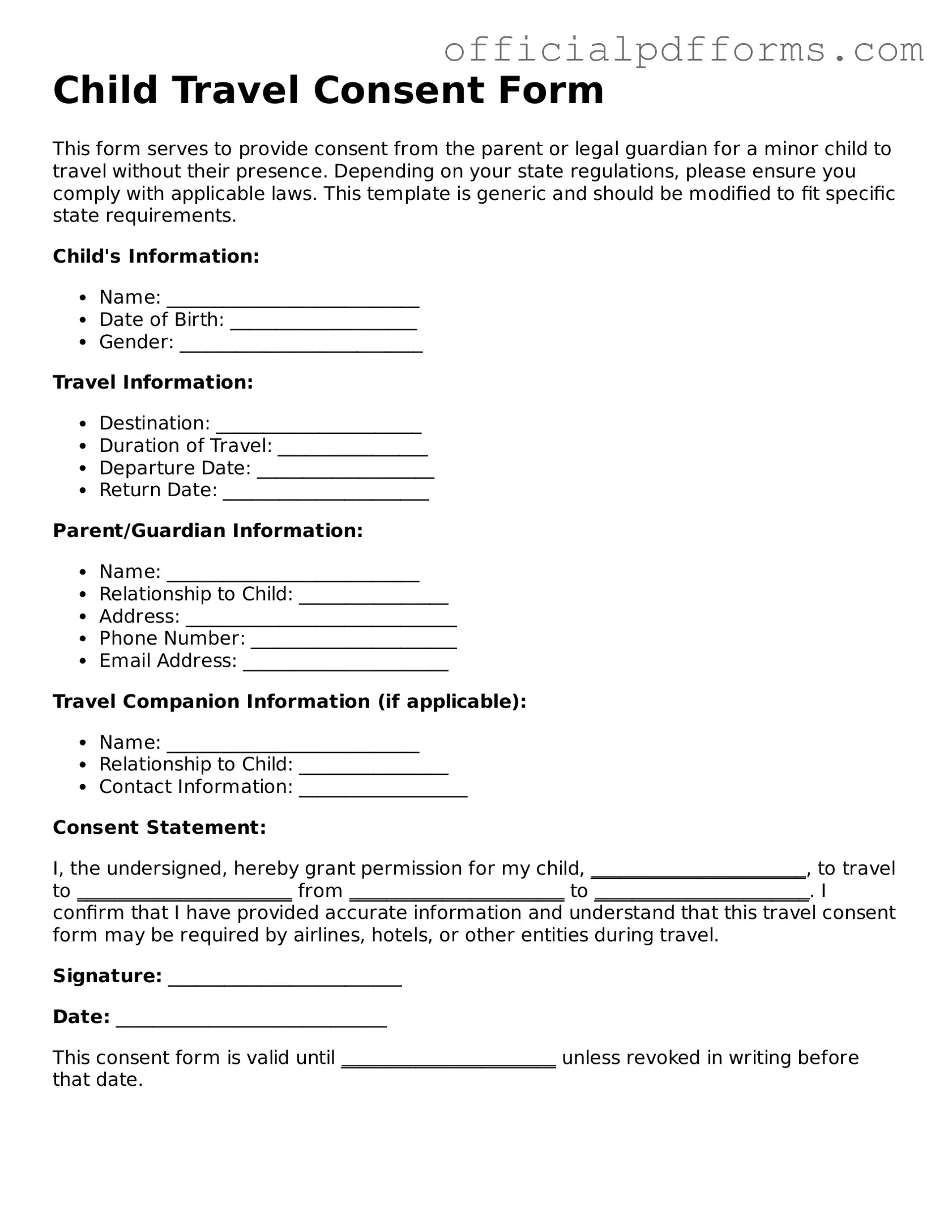When it comes to traveling with children, many parents and guardians encounter the Child Travel Consent Form. However, several misconceptions surround this important document. Understanding these misconceptions can help ensure a smoother travel experience.
- Misconception 1: The form is only needed for international travel.
Many believe that the Child Travel Consent Form is necessary only when crossing borders. In reality, some states require it even for domestic travel, especially if a child is traveling with someone other than a parent or legal guardian.
- Misconception 2: A notarized form is always required.
While having a notarized consent form can add an extra layer of security, it is not universally required. Different airlines and jurisdictions have varying rules, so it’s essential to check specific requirements before traveling.
- Misconception 3: The form must be filled out by both parents.
Some think that both parents must sign the form. In cases where one parent has sole custody, only that parent’s signature is necessary. Providing proof of custody may also be required.
- Misconception 4: The form is only for legal guardians.
This document is not limited to legal guardians. Aunts, uncles, family friends, or anyone else traveling with a child can use the form, provided they have permission from the child's parent or legal guardian.
- Misconception 5: The form is a legally binding contract.
While the form serves as a record of consent, it does not function as a legally binding contract in the same way that other legal documents do. Its primary purpose is to clarify permission for travel.
- Misconception 6: You can use a generic template for any situation.
Using a generic template may not always suffice. Specific details, such as the child’s travel itinerary and the names of those accompanying the child, should be included to ensure the form meets all requirements.
- Misconception 7: The form can be obtained at the airport.
Many assume that they can simply obtain the form at the airport. However, it is crucial to prepare the form in advance. Most airports do not provide this document, and having it ready beforehand can prevent delays.
